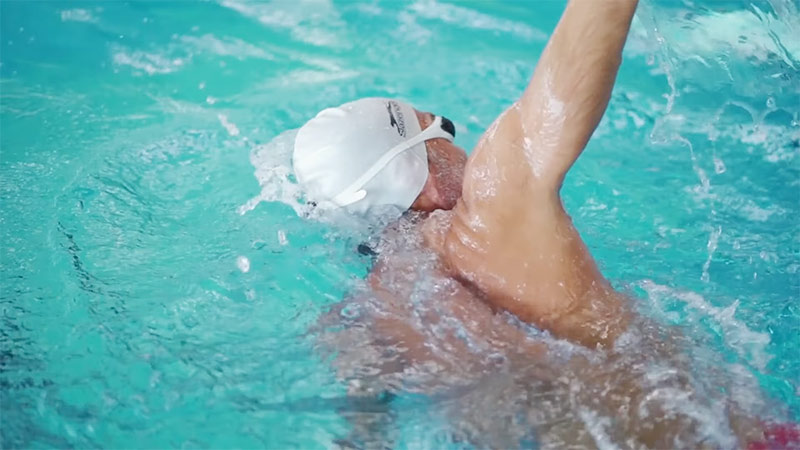Swimming is often hailed as one of the most comprehensive and beneficial forms of exercise.
Beyond its cardiovascular advantages, swimming can significantly impact your physique, particularly your shoulders. But does swimming make shoulders wider?
In this blog post, we dive into the depths of this intriguing question to uncover the science and mechanics behind the broad-shouldered swimmer’s stereotype.
We’ll explore how swimming engages different muscle groups, the role of genetics, and the development of a V-shaped upper body.
We’ll also discuss why the resistance of water matters and how consistent training influences your shoulder width.
You’ll have a comprehensive understanding of the relationship between swimming and broader shoulders, whether you’re a swim enthusiast or simply curious about the impact of this aquatic sport on your physique. Stay focused.
Does Swimming Make Shoulders Wider?
Whether swimming broadens your shoulders depends on so many things. Swimming is a form of exercise that engages various muscle groups, including the shoulders.
While swimming can contribute to the development and toning of the shoulder muscles, it does not directly alter the width of your shoulders in terms of bone structure.
However, it can make your shoulders appear wider by enhancing the muscular definition in the shoulder and upper back area.
Regular swimming workouts, especially those that involve different strokes and intensities, can lead to improved shoulder strength and endurance, promoting a more prominent V-shaped upper body.
Genetics also play a role in determining your natural body shape. So, while swimming can enhance the appearance of broader shoulders, the extent of this effect may vary from person to person.
Swimming is a great way to achieve a well-defined upper body, but significant changes to bone structure are not part of the equation.
The Mechanics of Swimming Wide Shoulders
The mechanics of swimming can contribute to the appearance of wider shoulders through several key factors:
Muscle Engagement
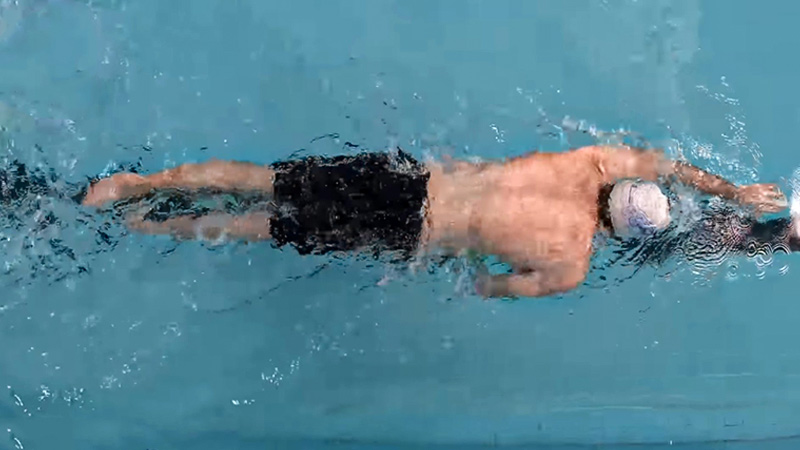
Swimming requires the active engagement of the shoulder muscles, particularly the deltoids.
Different swimming strokes, such as freestyle, butterfly, and backstroke, involve a full range of motion for the shoulders.
This constant use of the shoulder muscles can lead to muscle development and increased shoulder width.
Toning and Definition
Swimming is an excellent full-body workout that not only strengthens the shoulder muscles but also tones and defines them.
The repetitive and continuous motion of the arms while swimming helps sculpt the shoulder area, making it appear more prominent.
Upper Body V-Shape
Swimming promotes the development of the upper back and lats, which, when well-defined, create the illusion of a V-shape in the upper body.
This V-shape visually emphasizes the shoulders and contributes to a broader upper body appearance.
Posture Improvement
Swimming encourages good posture, which naturally aligns the shoulders and the back.
Maintaining proper posture can further accentuate the appearance of wider shoulders, as slouching or rounded shoulders can make them appear narrower.
Consistency and Training
To achieve broader shoulders through swimming, consistency is key. Regular and structured training, along with varying swimming strokes and intensities, can enhance the results.
However, genetics and individual body types play a significant role in determining how much one’s shoulders will naturally broaden through swimming.
Why Do Swimmers Have Broad Shoulders?
Swimmers often have broad shoulders due to a combination of factors, including:
Muscle Development
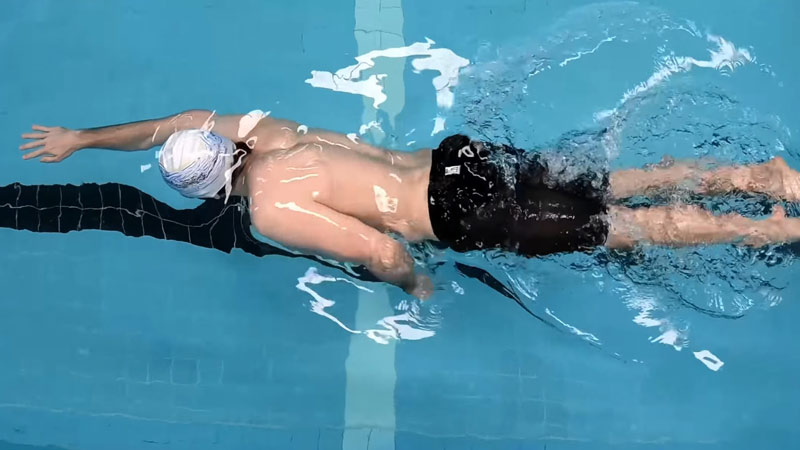
Swimming is a full-body exercise that heavily engages the upper body, particularly the shoulder muscles.
The repetitive and forceful movements of swimming strokes, such as freestyle and butterfly, work the deltoids, trapezius, and latissimus dorsi muscles.
Over time, this consistent muscle engagement leads to muscle growth and development, contributing to broader shoulders.
Resistance in Water
Water provides natural resistance to movement, which requires swimmers to use their upper body strength to propel themselves through the water.
This resistance amplifies the workout for the shoulder muscles, further promoting their growth and definition.
Balanced Workout
Swimming involves a wide range of motions, incorporating various strokes like freestyle, breaststroke, and backstroke.
These different strokes target different parts of the shoulder and back muscles, ensuring a balanced and comprehensive shoulder workout.
V-Shape Effect
The development of strong and toned back muscles, particularly the latissimus dorsi, creates a V-shape in the upper body.
This V-shape visually accentuates the width of the shoulders, making them appear broader when combined with well-defined deltoid muscles.
Posture and Core Strength
Swimming promotes good posture and a strong core, which can also contribute to the appearance of broader shoulders. Proper posture aligns the shoulders with the rest of the upper body, enhancing their prominence.
Factors That Influence Shoulder Width
Several factors influence an individual’s shoulder width, and they include:
Genetics
Genetics play a significant role in determining one’s bone structure and, consequently, shoulder width. The width of your shoulders is largely predetermined by your genetic heritage.
If your parents or family members have broad shoulders, you are more likely to inherit this characteristic.
Muscle Development
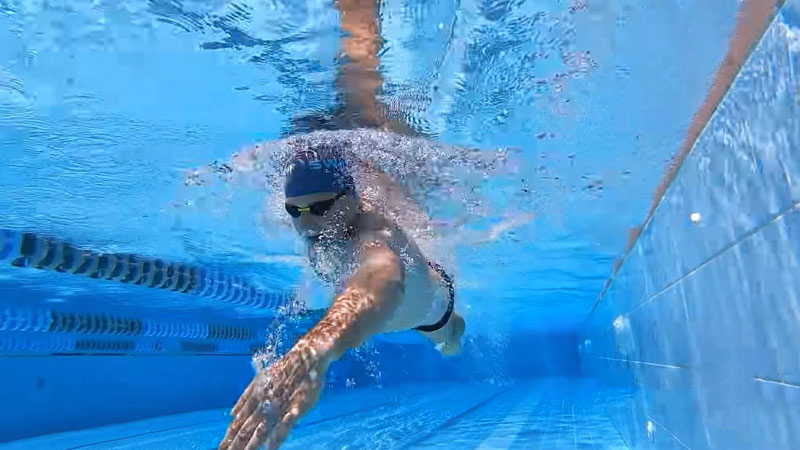
The size and shape of your shoulder muscles, primarily the deltoids, can influence the appearance of your shoulder width.
Engaging in resistance training, weightlifting, or activities like swimming, which target the shoulder muscles, can lead to muscle growth and a broader shoulder appearance.
Hormonal Influence
Hormones, particularly testosterone, can impact the development of muscle mass and strength.
Higher levels of testosterone in males can lead to broader shoulder development during puberty, contributing to a more traditionally masculine shoulder profile.
Exercise and Activity
Regular exercise and physical activity can enhance shoulder width by promoting overall muscle development.
Activities that involve upper body strength and compound movements, such as bench presses, overhead presses, and pull-ups, can have a significant impact on shoulder width.
Posture
Good posture can make your shoulders appear broader, as it aligns the shoulders with the rest of the body.
Slouching or poor posture can have the opposite effect, making shoulders seem narrower. Correcting posture through exercises and conscious effort can improve the visual perception of shoulder width.
Shoulder width is influenced by a combination of genetic factors, muscle development, hormonal influences, physical activity, and posture.
Balancing Shoulder Development
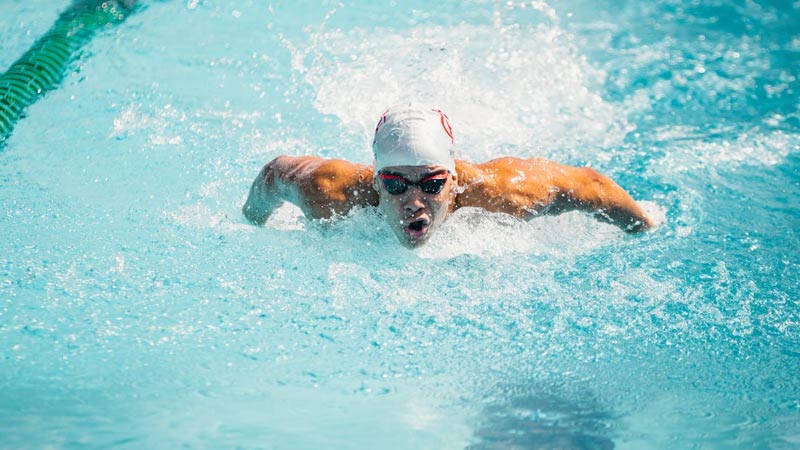
Balancing shoulder development is essential to maintain shoulder health and overall symmetry.
Here are some rare points to achieve balanced shoulder development:
Isolation Exercises
While compound exercises like overhead presses and pull-ups are crucial for overall shoulder strength, incorporating isolation exercises can help address specific areas of the shoulder.
Exercises like lateral raises and face pulls target the lateral and rear deltoid muscles, ensuring comprehensive development.
Stretching and Mobility
Neglecting shoulder mobility and flexibility can lead to imbalances.
Incorporate stretching exercises like the doorway stretch, YTWL exercises, and external rotations to maintain healthy shoulder joints and prevent overdevelopment in one area.
Unilateral Training
Including unilateral exercises like single-arm dumbbell presses and single-arm lateral raises can help identify and rectify strength imbalances between the left and right shoulders.
This ensures that both shoulders are equally developed.
Varying Rep Ranges
Adjust your repetition ranges to challenge different aspects of shoulder development.
Low-repetition, high-weight sets can promote muscle growth, while high-repetition, low-weight sets enhance muscular endurance. Incorporating both can help achieve balanced development.
Functional Movement Patterns
Incorporate functional movements that mimic daily activities.
Exercises like farmer’s walks, where you carry weights in each hand, can help improve overall shoulder strength and stability, ensuring that your shoulders are prepared for various real-life demands.
Does Swimming Make Your Shoulders Broader?
Swimming is often credited with the potential to make shoulders broader, but the reality is more nuanced. Here are some unique points to consider:
Muscle Recruitment
Swimming is a full-body workout that actively engages the shoulder muscles. Different strokes, like the butterfly and freestyle, require powerful movements from the shoulders.
Over time, this consistent muscle engagement can lead to growth and development in the shoulder area, contributing to broader shoulders.
Varying Strokes
Different swimming strokes target distinct areas of the shoulder muscles. For example, the butterfly stroke heavily engages the front deltoids, while the backstroke emphasizes the rear deltoids.
A well-rounded swimmer who practices various strokes can achieve more balanced shoulder development.
Water Resistance
Water offers natural resistance, making every stroke a resistance exercise. This resistance challenges the shoulder muscles, encouraging strength and endurance development.
The cumulative effect can contribute to broader shoulders over time.
Genetics and Body Type
While swimming can enhance shoulder muscle development, the extent to which your shoulders will widen depends on genetics and your individual body type.
Genetics largely determine your bone structure, which plays a significant role in shoulder width. Swimming can’t change your bone structure, but it can maximize your genetic potential.
Posture and Alignment
Swimming promotes good posture as swimmers maintain a streamlined body position in the water.
Improved posture not only enhances the appearance of broader shoulders but also contributes to overall upper body aesthetics.
Swimming does have the potential to make shoulders broader by strengthening and developing shoulder muscles.
FAQs
Does swimming make your shoulders broad at a young age?
Swimming can contribute to broadening shoulders in individuals of various ages, but the extent of its impact on young swimmers may be influenced by factors like genetics and training intensity.
While it can help develop shoulder muscles, genetics play a significant role in determining one’s natural body shape.
Does swimming broaden shoulders effectively?
Swimming can be an effective way to develop and strengthen the shoulder muscles, potentially leading to broader shoulders over time.
However, the effectiveness of this depends on the swimmer’s training regimen, consistency, and their body’s response to exercise.
Does swimming give broad shoulders?
Swimming can help give the appearance of broader shoulders by toning and strengthening the muscles in the shoulder and upper back region.
It can enhance the V-shape of the upper body, but it may not radically alter bone structure.
Why does swimming widen shoulders?
Swimming widens shoulders primarily by engaging the deltoid muscles, which are responsible for shoulder development.
The repetitive, full-range movements of swimming strokes help build and define these muscles, resulting in a more prominent shoulder appearance.
Does swimming make your shoulders wider?
Swimming can make your shoulders appear wider by promoting muscle growth and enhancing the overall tone of the shoulder area.
While it won’t change your bone structure, consistent swimming can contribute to a broader and more sculpted shoulder profile.
Wrapping Up
In the quest to understand whether swimming makes your shoulders wider, we’ve navigated through the dynamics of this fascinating sport.
While swimming engages various shoulder muscles and creates a V-shaped illusion in the upper body, it’s crucial to remember that the extent of shoulder broadening varies from person to person.
Genetics, training consistency, and your unique body response all play pivotal roles.
Swimming can undoubtedly contribute to a broader shoulder appearance, but it won’t change your bone structure.
If you’re a dedicated swimmer, you can enhance your shoulder development by varying your strokes, maintaining good posture, and incorporating resistance training. Thank you so much.

